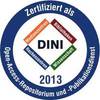Preview |
PDF, English
- main document
Download (4MB) | Terms of use |
Abstract
In the present study, I have investigated the cellular molecular and mechanisms regulated by the crosstalk between fluid shear stress (FSS) and canonical BMP9/10 signaling pathway, whose dysregulation leads to the formation of arteriovenous malformations (AVMs), a pathogenic feature of dysfunctional SMAD4 signaling in endothelial cells (ECs). Interestingly, in the first part of my study, I found that BMP9/10 signaling pathway through SMAD4 acts upstream of FSS to restrict FSS-mediated KLF4 induction that tempers the downstream Akt activation. And this mechanism is required to maintain EC quiescence and vascular homeostasis. Thus, upon loss of Smad4 in the ECs two pools of PI3K/Akt hyperactivation occur: one through transcriptional de-repression of casein kinase (CK2) and resultant inactivation of PTEN and the second one that is specific to the high-flow AVMs through upregulation of KLF4 driving an increase in the receptor tyrosine kinase, TIE2 expression that further exacerbates PI3K/Akt signaling activation. These findings highlight the role of RTKs other than the well-known VEGFRs in regulating EC mechano-transduction signaling events. In the second part of my study I was interested in identifying the KLF4-TIE2-Akt upstream regulatory mechanisms governed by SMAD4 signaling. Interestingly, I identified another RTK, KIT, that independently of its ligand stem cell factor (SCF) acts upstream of KLF4 and Akt activation. I identified that KIT is regulated by the BMP9/10-FSS crosstalk and furthermore SMAD4 signaling is required for FSS mediated KIT downregulation irrespective of FSS magnitude. Thus, is Smad4 LOF ECs, KIT expression is upregulated and mediated excessive ERK5 activation, an upstream event that regulates KLF4 induction upon FSS. Increased KitErk5 pathway was further validated in vivo in neonatal retinas with EC specific Smad4 depletion. KIT was found also within the AVMs in HHT patient biopsies. Lastly, the inhibition of Kit using a selective inhibitor was able to rescue AVM formation in mouse retinas, providing evidence that targeting RTKs can potentially mitigate AVM development. These findings outline a complex signaling network involving SMAD4, PI3K/AKT, KIT, ERK5, and KLF4, revealing RTKs as key modulators of endothelial responses to FSS and AVM pathology. These results suggest that RTKs, particularly KIT and TIE2, play a crucial role in the pathogenesis of AVMs and highlight their potential as therapeutic targets for treating AVM-related vascular abnormalities.
| Document type: | Dissertation |
|---|---|
| Supervisor: | Wieland, Prof. Dr. Thomas |
| Place of Publication: | Heidelberg |
| Date of thesis defense: | 12 May 2025 |
| Date Deposited: | 18 Jun 2025 12:46 |
| Date: | 2025 |
| Faculties / Institutes: | The Faculty of Bio Sciences > Dean's Office of the Faculty of Bio Sciences |
| DDC-classification: | 570 Life sciences |









